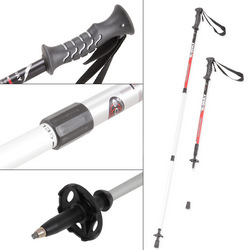Mount Kilimanjaro is definitely one of the most climbable mountains because of its low technicality. In other words, you need legs and feet instead of ropes and ladders. And there have been climbers in wheelchairs so legs and feet are also not 100% necessary.
But how does one prepare for this 70km walk? Where does one start? How long before the time should one start? These are all questions our team asked and not all followed the same advice. It is important to note that each person has a different fitness level and you should base your preparation on your current fitness level If you are a relatively active person who visits the gym al least once a week you will need to start training about 3 months before the climb. If you are a couch potato who has never been to the gym and who is only doing this to prove something, you might have to abandon the idea and go with something else. However, if you walk often and climb stairs instead of the lift you can start about 6 months before the climb.
Our group was a bit nervous so we started about a year before the time. Our very first fitness test was a 10km hike in tennis shoes, carrying small water bottles and no snacks. I couldn't talk much because I was so out of breath! And I am an active person, seeing the inside of the gym at least once a week.
It is definitely a good idea to start with something like a long hike. 10 to 15 km on the very first try. This will give you a mental gage. Try to do a long hike at least once a month if you plan to start a year in advance. If you are comfortable to start 3 months before, take a hike each weekend. Try to pack your daypack with all the goodies you would take onto the mountain. Always fill up your hydration pack even if you won't use it all. Always have breakfast - I like a boiled egg or two.
Preparation
Day 1
1-hour aerobics in the gym or similar - gardening won't cut it, it needs to be more intense than that.
Day 2
Suburban hike - find a route, preferably with a steep hill, in your neighbourhood. Try to walk for at least 3 hours. You have to walk briskly as if you are going to miss the bus. Otherwise, there is no point...
Day 3
Endurance - my suggestion would be to choose a hill and walk up and down as many times as possible in a set time - at least 2 hours. You have to be out of breath. It prepares you for those out of breath moments on top of the mountain. If you live in a ver flat area, join the gym and set the treadmill to very steep. It is not really the same but try and make the best out of it. The hill prepares you for the uphill you will face daily.
Day 4
Rest - although it is better to do something each day but be careful not to over train. You won't overtrain your body but your mind will probably get tired of doing the same thing each week.
Day 5
Resistance - do an hour of resistance training at the gym. Focus on legs as they will have to be strong on the downhill.
Day 6
10 to 15 km hike in a bushy, rocky area. Groenkloof Nature Reserve works very well as well as Fearie Glen Nature Reserve. I am sure there are lots of rocky trails in Johannesburg and Krugersdorp. Cape Town has the best options of course. I am almost sure KwaZulu Natal even better.
Day 7
I would rest again but you could do an hour long suburban walk... Depending on your fitness level.
You could mix it up a bit and add some swimming or running. You should do what you like.
1. Train you legs and feet to get used to up and downhills
2. Train your lungs for the out of breath feeling
3. Train your mind for the long hikes that feel like they will never end
4. Get used to your climbing party
5. Get used to your gear
Be careful of sprains and strains - you don't want to end the trip before it starts. Also ALWAYS wear two pairs of socks. even if it is very warm - it will prevent blisters.
www.africanreignsafaris.com












